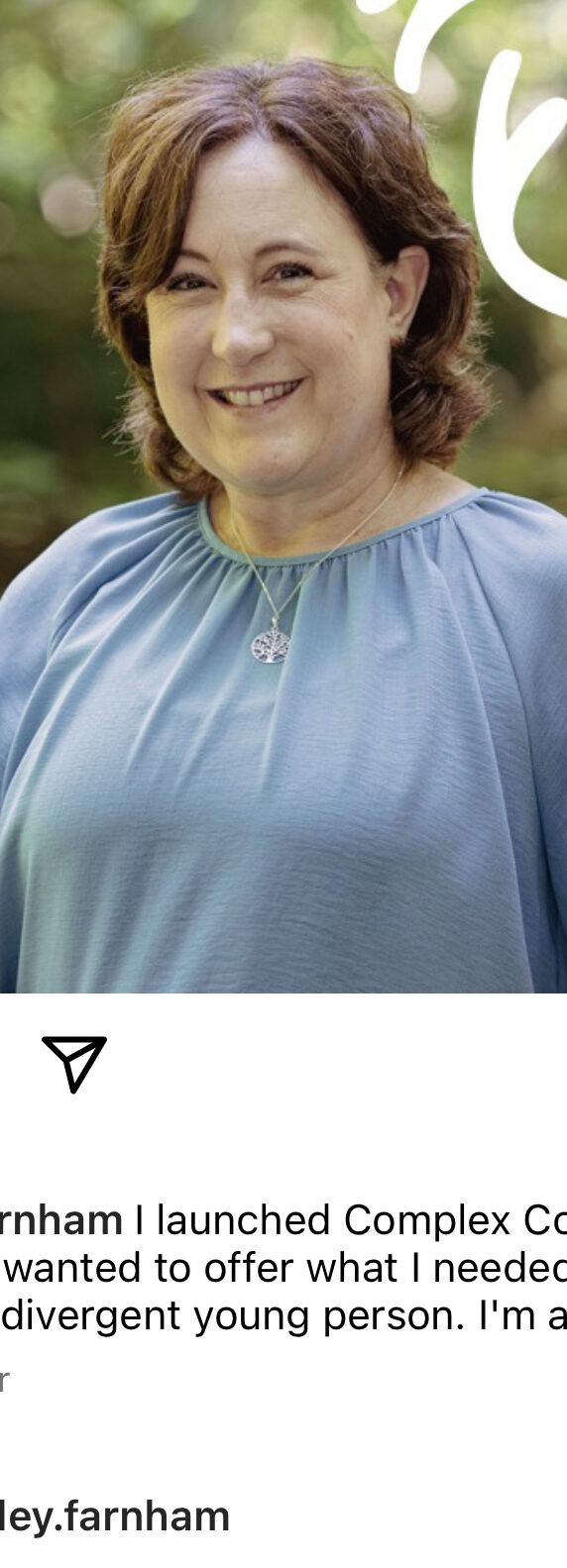There was a time when ‘phonics’ wasn’t a thing! Instead, children were exposed to words and texts, spending time with people that could already read, gradually acquiring the ability to read for themselves. Since many children learnt to read this way, it was, self-evidently, a successful process. However, many children did not. So, along came phonics, offering a‘learn to read’ system, that, if implemented correctly, guaranteed a child would come out the other side reading fluently. There was a brief battle of approaches. However, because phonics ‘guaranteed’ 100% of children would learn to read (assuming the child had the cognitive capacity to read and the program was implemented correctly), and therefore less children would be left behind, it was destined to be the winner. It all boiled down to proportions.
In a similar vein, there are still far too many children that leave primary education without the expected standard in Mathematics. Although this has been tackled at various entry points (e.g. more technical teacher training, the movement towards deeper learning), taking an approach akin to phonics suggests these entry points are too far up the kinetic chain. Far better to isolate the origin of the problem by asking, ‘What is the essential number knowledge that all children must acquire, and how can the learning process be assembled into a structured programme that schools can easily adopt?’.
Maths: The Beauty and The Beast
The above question is such an obvious starting point, we should consider why it seems to have been missed. Mathematics is a beautiful subject with infinite pattern and possibilities. This beauty is maths. However, orienting towards this beauty highlights the complexity, presenting Mathematics as an entity that’s proved difficult to tame at national, organisational and school levels. It’s worth restating what is happening and what is at stake here; we don’t have a recognised teaching approach that gives control over any given child’s early number journey. Strangely, we do for reading, even though numbers are naturally sequenced by their values, and letters/sounds aren’t. With such obvious sequencing, why have we not gained control of the learning of early number? Here are five aspects of Mathematics, each contributing to the delay in seeing a phonics-like structure for teaching early and essential number-fluency.
Problem Solving: The thinking goes something like this, ‘Maths is all about problem- solving, so let’s learn all of Maths through solving problems’. Superficially, this makes sense. However, children must first be genuinely fluent processing number, to then create the cognitive capacity needed to focus attention on the problem to solve.
Discovery: It is sometimes useful for children to explore their mathematical environment, making connections, realising new concepts, and strengthening categories by rejecting elements that don’t fit. However, leaning into a constructivist pedagogy takes us away from a system for teaching number.
Depth: Of course, we want children to master a deep comprehension of number. However, just as phonics separates reading comprehension to be learnt another time, and in another way, temporarily parking-up deep mastery of number can free us to see the essential number-fluency content more cleanly (and then facilitate that deeper learning when it comes).
Interconnections: Mathematical ideas from the early years’ curriculum onwards co-exist as a complex interwoven structure. Whilst true and real, seeing this web of interconnections as a front-end user (teacher) can be overwhelming, taking us further from the simplicity needed in a high-impact, scalable, system. Alternatively, we can use technology to present a front-end system that is simple yet maintains accuracy and access to relevant interconnections when needed.
Definitions: Mathematics has typical content domains within it (shape and space, problem-solving and reasoning etc.) and yet doesn’t have a well-known central domain, in the same way phonics is central to English.
‘Number’ is too broad, as it includes the depth and discovery mentioned above.
‘Numeracy’ takes us closer, but this refers to the ability to fluently process number in mathematical and real-life contexts, and to do that we must first be able to fluently process the number!
Again, ‘number-fluency’ takes us closer to ‘Phonics for Maths’. However, ‘fluency’ is a term now used widely; referring, at times, to smoothly moving from one possible calculation procedure to another (having multiple methods to choose from), rather than our interest here in ensuring every child has one strong fluent procedure for each basic calculation they come across. We can also think of ‘fluency’ to mean ‘thinking without hesitation’. Whilst this is precisely how we wish children to process number, it doesn’t account for the amount of thoughts. For example, a child responding to ‘68 + 7’ by counting on 7 from 68, might do this without hesitation, but we can’t be impressed by the amount of thoughts they’ve used, compared to seeing the ‘15’ jump out and immediately blending it with 60 to give 75. Ultimately, an equivalent phonics program for Mathematics must be focused only on ’essential number-fluency’.
It’s not that these features are wrong or over-valued. They are part of the beauty of Mathematics. The issue being surfaced here is that of an undifferentiated view of primary/elementary Mathematics; one that fails to see the significance, the characteristics, and the pedagogical distinction of the essential and central part.
Essential Number-Fluency: The Similarity and The System
Although not identical, we can come to understand ‘essential number-fluency’ far better – in terms of curriculum content, sequence of learning, and effective pedagogy – when seen as a reflection of phonics. It has many similarities. Identifying these shared features isn’t merely ‘interesting’, it is a move through the complexity of Mathematics into the simplicity on the other side, and from there a clear system begins to present itself. This is what we have achieved at Winning With Numbers. We have worked over many years to assemble a ‘Phonics for Maths’ programme originating in expert knowledge of essential number- fluency, building in a deep understanding of when the similarities to phonics are impactful, and when they are not. The result is a very precise, easy-to-implement, system. This comes to users (teachers/learners/leaders/parents) through a simple front-facing programme.
Here are some of the most useful ways that essential number-fluency is like phonics:
It’s like a different subject.
As we saw above, an undifferentiated view of Mathematics leads us to give it characteristics that are, then, incorrectly applied to all of the content. Blanket phrases like ‘Maths is easy’ or ‘Maths is all about problem-solving’ always take us down an incorrect path. As with the subject ‘English‘, where the central and essential curriculum content (phonics) has such a distinctive set of characteristics that ring- fencing it and treating it like a subject in itself has proved hugely impactive, the first step to securing essential number-fluency in all children is to identify the content. Toreiterate, this isn’t happening just because that is what happens with English/phonics. This, also, isn’t just as simple as taking the earliest number content; even with numbers to 10, we can see some learning is essential number-fluency, as opposed to deeper learning, using/applying or problem-solving. This isolating of core content is happening for good, academic, reason; because essential number-fluency also has its own set of distinctive characteristics, both in terms of content and pedagogy. Identifying that content (by asking, what’s in, what’s out, and why?), and therefore just seeing theprimary Mathematics curriculum in this differentiated way, is a huge leap forward. It sets the scene for the following points.
It’s a means to an end.
In a way, we don’t want children to be on a phonics programme…we want them to be the other side of it! Children need to learn to read in order to read to learn (and for pleasure), and it is the same with essential number- fluency. It too has an end point. We want children to acquire this knowledge as soon as possible, to access Mathematics earlier, deeper, smoother. Ultimately, and paradoxically, this is all about the other part of the Mathematics curriculum. As soon as we have raised this content up and out of the wider Mathematics curriculum, we can give this content top priority in terms of resource, professional development, delivery, tracking, intervention etc. This being true for all schools, but especially significant for those who need to raise the academic outcomes bar.
It has a predictable sequence of learning.
Once we have separated essential number- fluency, we see a learning journey present itself as a system to us. Perhaps more than any other curriculum domain across education, we see a learning journey characterised by dependencies, e.g. we can’t verbally count to 20 until we can count to 10, or, we can’t double 34 without first being able to double 30. Again, when we consider that a systematic programme for letters and sounds can be constructed, one would expect that an equivalent programme for number would be far easier. This highlights the incredible strength of the counteracting forces mentioned above. However, with the beast understood and tamed, we can indeed finally capitalise on the simplicity of progression. Or let’s put it another way, all children can benefit by being taken through a sequence of learning that builds knowledge on top of prior learning. When such a sequence of learning is implemented correctly over years, a teacher no longer needs to interrupt their teaching, turn around, go back to plug gaps in earlier learning (a difficult enough task with one child, never mind several/many).
It is synthetic.
Just as with phonics, development of number-fluency relies on the child moving from one-thought responses (‘see this letter, make this sound’; ‘see 6+7, say 13’) to two-thought responses (‘see 60 + 70, think 13 and think ‘tens’’). We can then progress to three-thought, and four-thought, cognitive processing, and, as with phonics, the original two-thought process needs to be smoothed into a single automatic thought (‘see 68 + 75, think 130, think 13, think 143’). At all stages of cognitive processing, for both phonics and essential number-fluency, progress is always severely slowed if the child enters the learning without the fluency-foundation in place. For progress to be friction-free, the teacher should merely be assembling already-fluent parts. This reduces the intrinsic cognitive load to a minimum, allowing the child’s limited attention to be placed entirely on the new procedure and concept. This is why the sequence of learning mentioned above is vital. If the sequence is correct, and implementation is successful, the ‘new fluency’ is already within reach. This is the fundamental teaching principle that a ‘Phonics for Maths’ programme makes a constant reality across year groups. We see the same principle at play throughout every step of essential number-fluency progression. If a child isn’t yet automatically reciting, ‘6,12,18,24,30,36…’, they won’t easily move to ‘60,120,180,240,300,360…’, no matter what the teacher does and says.
It’s learning content sits outside of context.
If we think of decoding the word ‘shop’, or reciting, ‘2,4,6,8’ without hesitation, we see that the successful outcome sits outside of context. Even if a child was given a context as a door into the counting sequence (for example, counting socks by grouping them in pairs), the desired learning outcome is that the child can recite out of context. As with reading the word ‘shop’, the entire purpose is that this fluency is ready to be used, later, in context. From the perspective of the fluency programme, the learning is not complete until it is automatic, taking place out of context, and is repeatable over time. Indeed, the decontextualised learning is part of the teacher making the point to the child that the knowledge they now have is ready to be applied into any new/unfamiliar contexts. One of the purposes of the fluency programme (both phonics and essential number-fluency) is that it extracts each learning point out of context, cleaning it and clearing it. The same is true for the entire programme. The entire programme is best extracted out, as a systematic programme of learning away from the wider mathematics journey. It is when the essential content is‘left in’ that it gets lost in the fog of context and wider connections. Failing to identify the essential learning content cleanly, makes it impossible to isolate as a priority.
It’s all made up!
It was only on reading David Didou’s brilliantly clear explanation (see his book ‘Making Kids Cleverer’) that I really grasped that, whilst there is a long hunter/gatherer evolution of communication (verbal and non-verbal) for us to lean on, there are no short cuts to the fact that the letters and sounds we ask children to attach meaning to are, relatively, very recent human constructs. Similarly, whilst we have a deeply-rooted appreciation of amounts/quantities/magnitude (see Brian Butterworth’s work), arising out of an age-long struggle for survival, the number names, written form of the 10 digits, and the operations we ask children to perform, are also recent human constructs that children aren’t pre-wired for. Consequently, as with phonics, the curriculum content of essential number-fluency requires direct and explicit teaching. Just as it is with teaching a child to tie shoelaces or cross a busy road, it is a process of‘expert to novice’ transmission of information. The fluency programme knows how to teach that content, both concepts and procedures, and so fidelity to the system becomes paramount.
Children meet success early.
If we implement all of the above, children always come to ‘new fluency’ with the fluency foundation and momentum for high success and easy progress. When we adopt a blanket approach to all of Mathematics, we tend to think children aren’t learning if they are scoring perfect marks, as they are not being challenged. However, with essential number-fluency we can expect children to always score 10/10! In other words, a ‘Phonics for Maths’ programme brings with it a positive mindset for children. Far better than telling children to think positively about Mathematics, is children realising the truth for themselves (‘This content is easy, and I’m good at it!’). This is a particularly valuable mental position for a child to take as they enter the grapple, struggle, and fun of problem-solving.
It obeys the law that ‘momentum is everything’.
This might seem something of an aside compared to the ‘meatier’ points above. However, it deserves special mention because all the above features of a fluency programme don’t live in isolation, but, rather, they work synergistically to create a force that’s bigger than the programme itself. Sometimes referred to as ‘the Matthew principle’ because Jesus pointed out that ‘to those that have, more will be given’, this is at the very heart of what ‘Phonics for Maths’ is surfacing. Just as the more one can read, the more one can read, the same is true for essential number-fluency. The more fluency grows, the more it grows. This momentum can be felt at the school-level, the class-level, and the individual child level. Conversely, when a school has no number-fluency momentum, everybody involves suffers. Starting off with inertia is the most challenging phase. Teachers need to know how to kick-start, and how to build, momentum, both at the class-level and for individuals whose fluency roundabout has come to a grinding halt.
Note too: One similarity that essential number-fluency has with phonics is that a key skill for learners to acquire is the ability to segment and blend; learning each in isolation, then combining into one smooth process. Ironically, although it’s nice to recognise this eye-catching and obvious similarity, it isn’t a high-impact similarity, and can serve as a distraction from all the above features. In short, there’s an awful lot more programme- similarity going on than that.
Phonics for Maths: The Orienting and The Organising
As with phonics, once we have the programme, our leadership processes orient towards it and our teaching structures are organised around it. Even schools currently pleased with their Mathematics attainment, may find this shifts the needle further, increasing ease and efficiency for teachers, simultaneously reducing workload and friction. Here are just a few examples of the principles we can look to activate:
• Timetabling of discrete lessons; typically, 15 to 20 minutes per day.
- Sustained, regular, professional development regarding programme delivery (as opposed to facilitating deeper mathematical understanding).
- Carefully mapped screening milestones for early identification of possible red flags.
- A focus on rigorous ‘keep up’, preventing ‘catch up’ later. Teachers providingadditional support as a bolt-on to large group, or whole-class, teaching.
- Prioritising parental engagement structures integrated to the programme aboveother curriculum areas.
- Employing the same atomised sequence of learning for ‘catch up’. Interventiondoesn’t introduce a new/different learning journey.
- Promoting fidelity to the system to drive consistency and build momentum.With a ‘Phonics for Maths’ programme in place, we can expect to see greater proportions of children access the full Mathematics curriculum already able to efficiently process number. The knock-on being more children moving more smoothly into wider content and deeper learning, earlier. Many schools have already carried out excellent work on mastering deeper learning. Although they may have implemented the cart before the horse, by injecting a ‘Phonics for Maths’ programme into their Mathematics provision, they can see far greater return on this investment.It is surely time to eradicate the moments when teachers turn to each other amazed that, despite everything, the child still can’t respond quickly and accurately when faced with basic number procedures. It is surely time to support the teacher who exclaims, ‘How can I teach problem-solving when they don’t have anything to problem solve with!’?
It is surely time, now, for ‘Phonics for Maths’!









